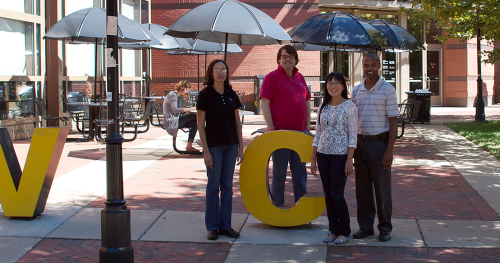Although I thought the journey documented through this blog was over, it was not!
This October, in St. Louis, Missouri, Shawnya, Angie and I traveled to the Carnegie Project on the Educational Doctorate conference to receive the 2014 Dissertation in Practice Award! Our dissertation project for Chesterfield County Public Schools completed with Derrick Deloatch was chosen as the first group dissertation award for a capstone style project that we completed at VCU.
Our thanks go to Dr. Shakeshaft, our capstone advisor, for coming to St. Louis with us and continuing to support us. She has been a great mentor and guide through the process and we are fortunate to have been able to work with her.
As part of the award came a cash prize and a really cool “trophy.” The three of us also got to present about our work and project to members of CPED in attendance at their fall convening.
We also were happy to know that Dr. Martin Reardon was in the audience and we were glad he could see us present. Dr. Reardon was our professor in the first two years of our VCU experience and was the one who lit the fire for us in even thinking about applying to CPED for their dissertation award. This was an awesome ending in our doctoral journey and I’d recommend future teams or individuals to consider sharing their work for this type of recognition.
Our thanks go to CPED for the opportunity and it was so nice to dialog with education professors who had the kindest words about our work and presentation. As we shared with the CPED community here in St. Louis, our technical document is available as an interactive eBook in the iBook Store from Apple for iPad. It is also available in PDF format through the CPED website.







